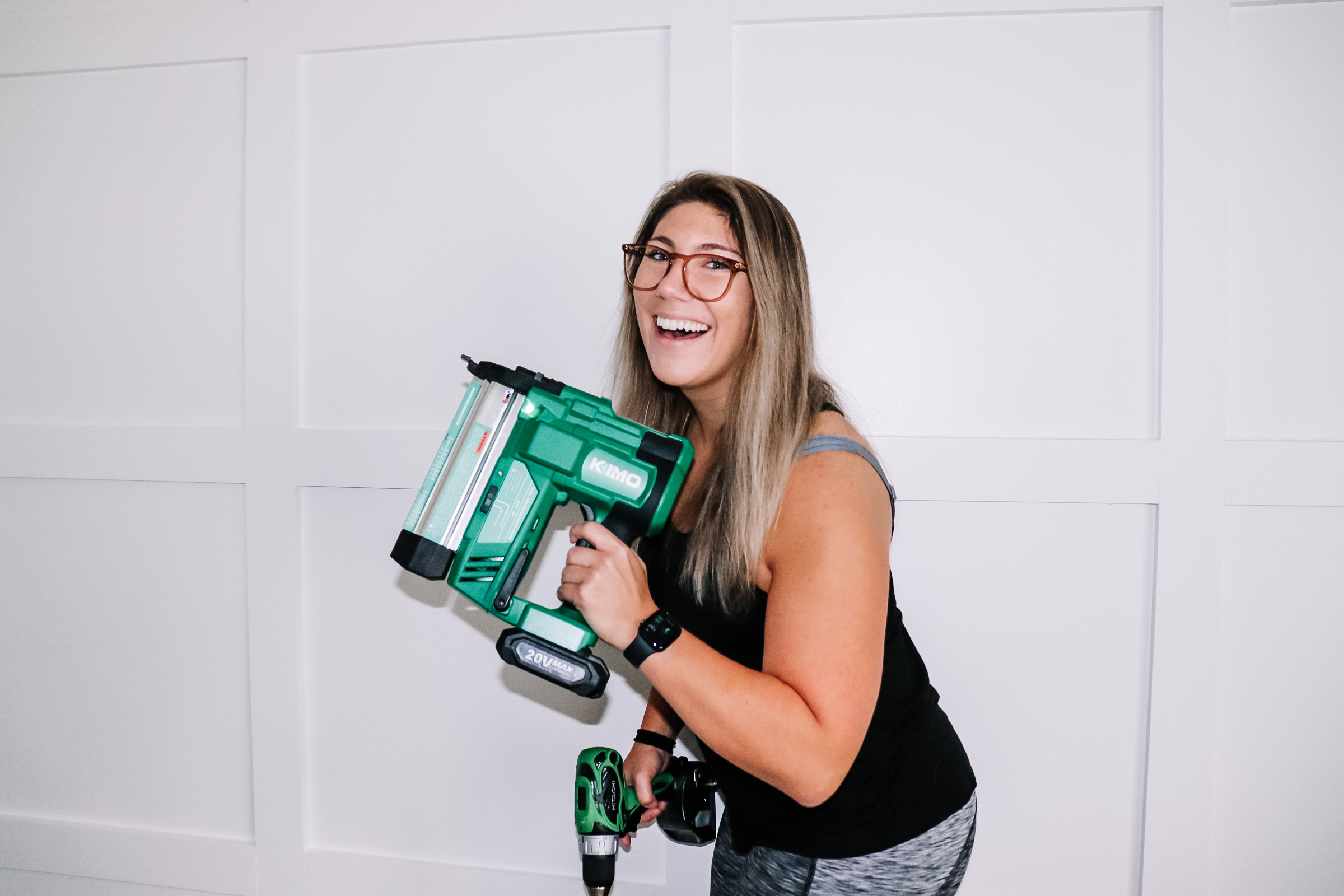DIY Headboard Tutorial
- Arianna Starnes

- Apr 1, 2023
- 4 min read
How to Build a Designer Style Headboard on a Budget

Tutorial
Tools + Materials Used:
Brad Nailer / Staple Gun
Staples and Nails
Cane webbing roll
Wood Filler
Sand Paper or Sander
Stain or Paint
1x4 Wood Trim for Headboard frame
Moulding for headboard detail
Kreg Pocket Hole Jig
Step 1: Create Plan + Initial Frame
First things first, what's your inspiration for the head board? I'm loving the modern/boho cane webbing headboards but some of these at over $2k and that is totally out of budget. Because I had an existing bed frame all I needed to do was add on a headboard that I could bolt to my frame - same as any headboard you buy from somewhere like Wayfair, etc.
Once you find your inspiration you can use their specs or choose your own head board measurements to fit your space. In my case I wanted it to be the same size as my old queen headboard so I based the height and length off of that. I ended up with a height of 54" and a length of 61".
I created a mock up sketch of what I wanted to build below. (The first time around this was a lot messier and probably on the back of a napkin, honestly). Next, gather/buy your supplies. I bought 5 1x4" pieces of pine at 8' a board to be used for the frame. I also bought thin trim/moulding (4 .5"x8' pieces) to border the inside of the headboard cut outs, where the frame meets the cane webbing. Make sure you check the lead time on your cane webbing from wherever you order it. I got a pretty large roll just incase I wanted to use it for other projects and it arrived in probably 2-3 weeks. You may be able to get some sooner in smaller quantities. (I'll be linking all the supplies and products I used later in the post).

Cut Wood for Headboard Frame
Cut the wood (1x4s) with your miter saw. I cut the wood with a mitered edge for the two exterior corners (both long vertical pieces and the top horizontal piece).
I assembled the exterior frame first by attaching the wooden pieces to each other with pocket holes using my Kreg Jig on the back of the frame so they would not be seen.
First I tested this method on a couple of scrap pieces to ensure where I was drilling my pocket holes was correct.
Once I was happy with the result I moved onto my real pieces and drilled 2 pocket holes right at the mitered edge of both verticals where they joined the top horizontal piece.
I drilled pocket holes on the flat edges of the long bottom horizontal piece, both inner horizontal pieces, and vertical beam.
To attach the middle vertical beam I attached a square piece to the horizontal beam at the spot I marked with clamps to ensure I was securing the beam straight and in the right centered location.
Cut Wood for Inner Trim
Next I cut and attached the inner trim for the headboard cut outs. Each cut out was a rectangle so each piece of trim was cut at a 45 degree mitered angle.
Cut your pieces according to the interior measurements of the frame (from inside right vertical beam to the inside of center vertical beam, and so on)
Your trim cuts should create 4 rectangles that fit inside of the existing frame.

To attach the trim I used both wood glue and my brad nailer. Glue the trim on the bottom and attach to the inside of the frame.
Clamp the glued pieces + nail in place
Fill any nail holes or seams between the trim and frame with wood glue and sand down

Prepping the Cane
Before you attach the cane webbing to your frame you need to soak the cane to soften the material so it's more pliable.
Because I had an entire roll of material I made a couple of rough cuts and didn't soak the whole thing. I cut two pieces, both the height and half the length of the frame.
To soak the cane, I filled up our bathtub with Luke warm water and let them sit for a few hours at least.
Once the cane is soft enough that it's easy to move the material you can begin attaching to the frame. (You'll know the cane needs to soak more if it's still splintering and not stretching)
Securing the Cane
I roughly cut the cane the same size as the frame opening then started securing it to the frame with clamps.
You want to make sure you keep the cane very tight across the frame opening so it does not dry saggy.
To make sure of this I kept the initial clamp in place and pulled the cane across the opposite side of the frame and secured it with a staple gun.
I worked my way around the frame keeping the cane tight with every staple.
I went over the line of staples with wood glue and secured the rough edging of the cane to the frame
Do this for all 4 frame openings.
Painting or Staining the Headboard
Once the cane is secured to the headboard frame and the wood glue is dry it's time to pick a paint or stain color.
Because I didn't like the way the light stain was looking over the wood filler I used I decided to go all black - definitely not in the original plan!
I used both matte black spray paint for the cane and black stain for the frame.
It will take multiple coats and different angles of spray paint to cover all the small details of the cane.
Once dry I sealed both the cane and framing. For the cane I use a spray sealant and for the framing I used Minwax Protective Finish in clear matte
The Final Product
Attach the headboard with nuts and bolts to your existing metal bed frame.



























Comments